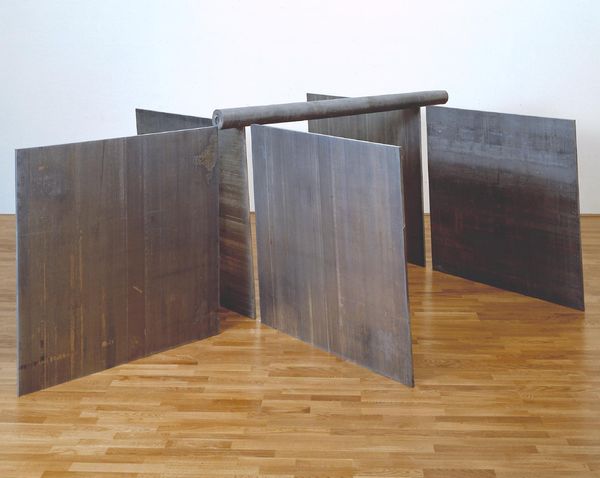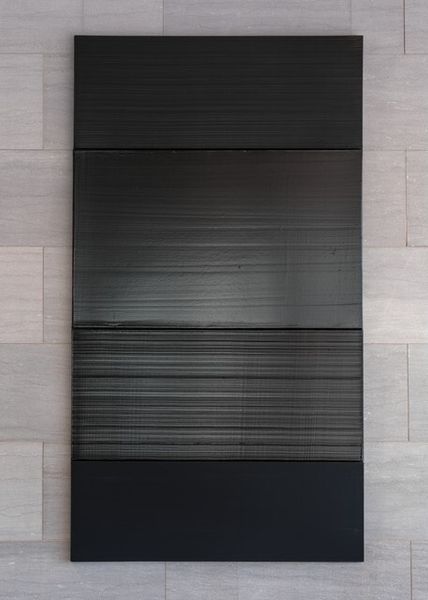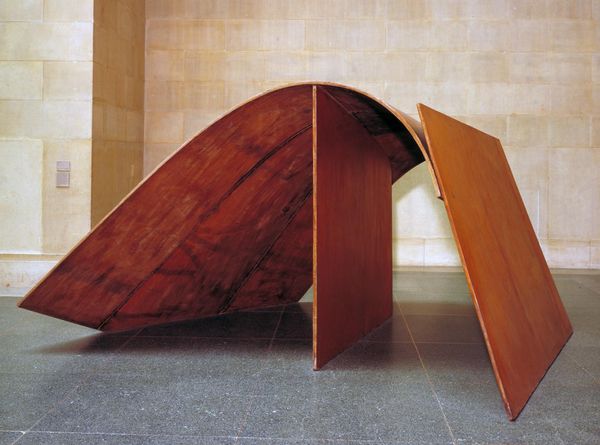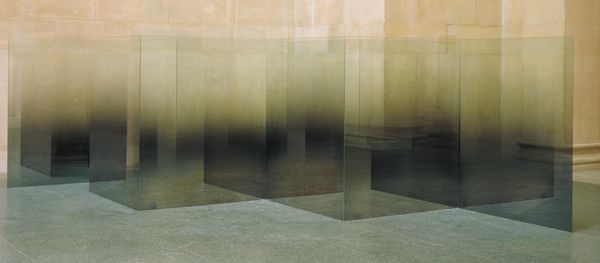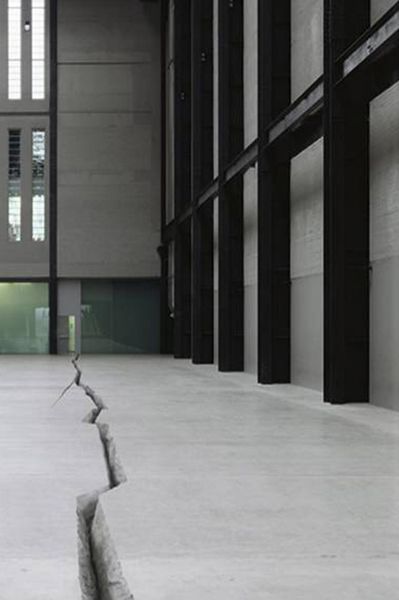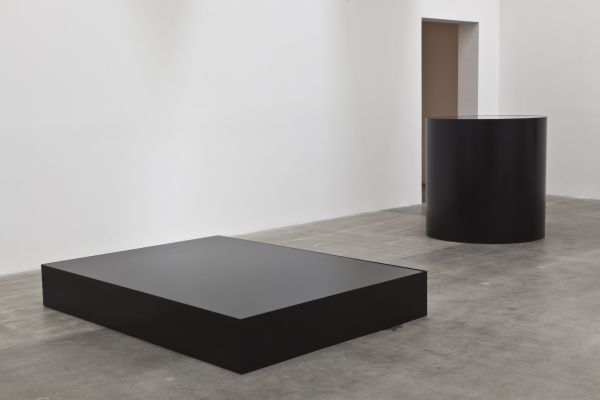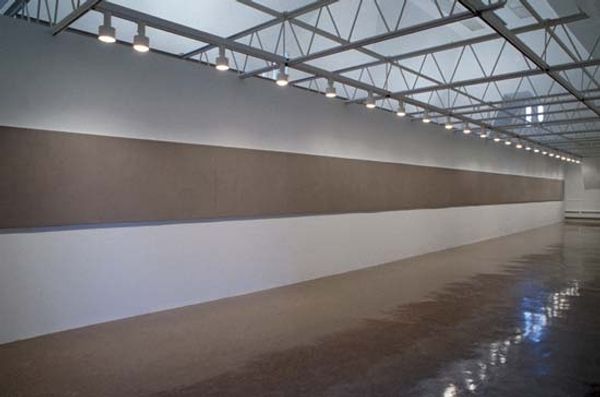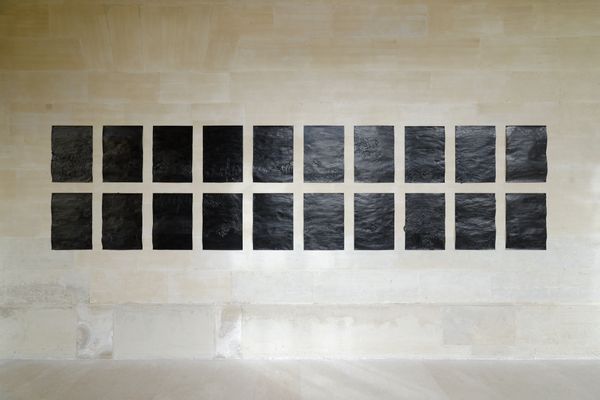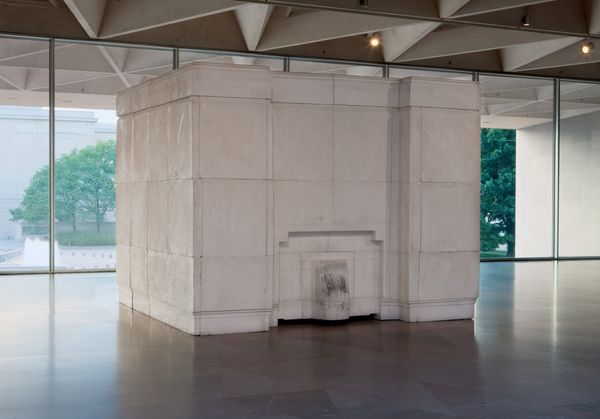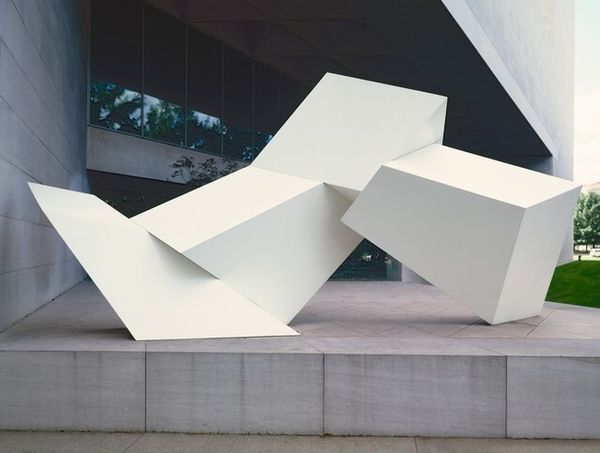
steel, metal, sculpture, site-specific
#
steel
#
minimalism
#
metal
#
sculpture
#
postminimalism
#
geometric
#
sculpture
#
site-specific
Dimensions: overall installed: 243.84 x 548.64 x 701.04 cm (96 x 216 x 276 in.) gross weight: 29281 lb. (13281.774 kg) gross weight (each plate): 5227 lb. (2370.952 kg) gross weight (each pole): 1573 lb. (713.508 kg)
Copyright: National Gallery of Art: CC0 1.0
Editor: We’re looking at Richard Serra's "Five Plates, Two Poles" from 1971, constructed out of steel. Its monumental scale feels almost imposing. I'm struck by how the artist utilizes industrial materials. What can you tell us about this sculpture? Curator: Serra's choice of steel isn't accidental. He challenges traditional notions of sculpture by embracing the raw, unadorned nature of industrial materials. This reflects a broader societal shift where the means of production become central. How do you think the process of assembling these plates influenced the final form? Editor: I imagine the act of physically maneuvering such heavy materials had a huge impact. There must have been a significant amount of labor involved. Curator: Exactly! Serra elevates the labor usually hidden behind artistic creation. Consider the environmental factors: the specific type of steel, its rusting process over time, how these interact with the gallery's atmosphere. Are these purely aesthetic considerations or something more? Editor: It feels like it transcends pure aesthetics. It's about the life of the material, its transformation through both natural processes and human intervention. So the location within a gallery versus an outdoor space, would create different artwork? Curator: Precisely. Serra’s pieces respond to their environment, blurring the lines between the artwork and its setting. It questions how we consume and interact with art. This work, for example, really changes my experience within a gallery. I’m confronted with mass and process. Editor: I see, it seems the art itself is less about visual perfection, and more about exploring the essence and implications of the medium, labour, and surroundings that construct its art form. Curator: Absolutely, and thinking about this process has offered new perspectives for both of us, I'm sure. Editor: For sure. It's incredible how analyzing the material and context can open up new ways to appreciate Serra’s vision.
Comments
No comments
Be the first to comment and join the conversation on the ultimate creative platform.

